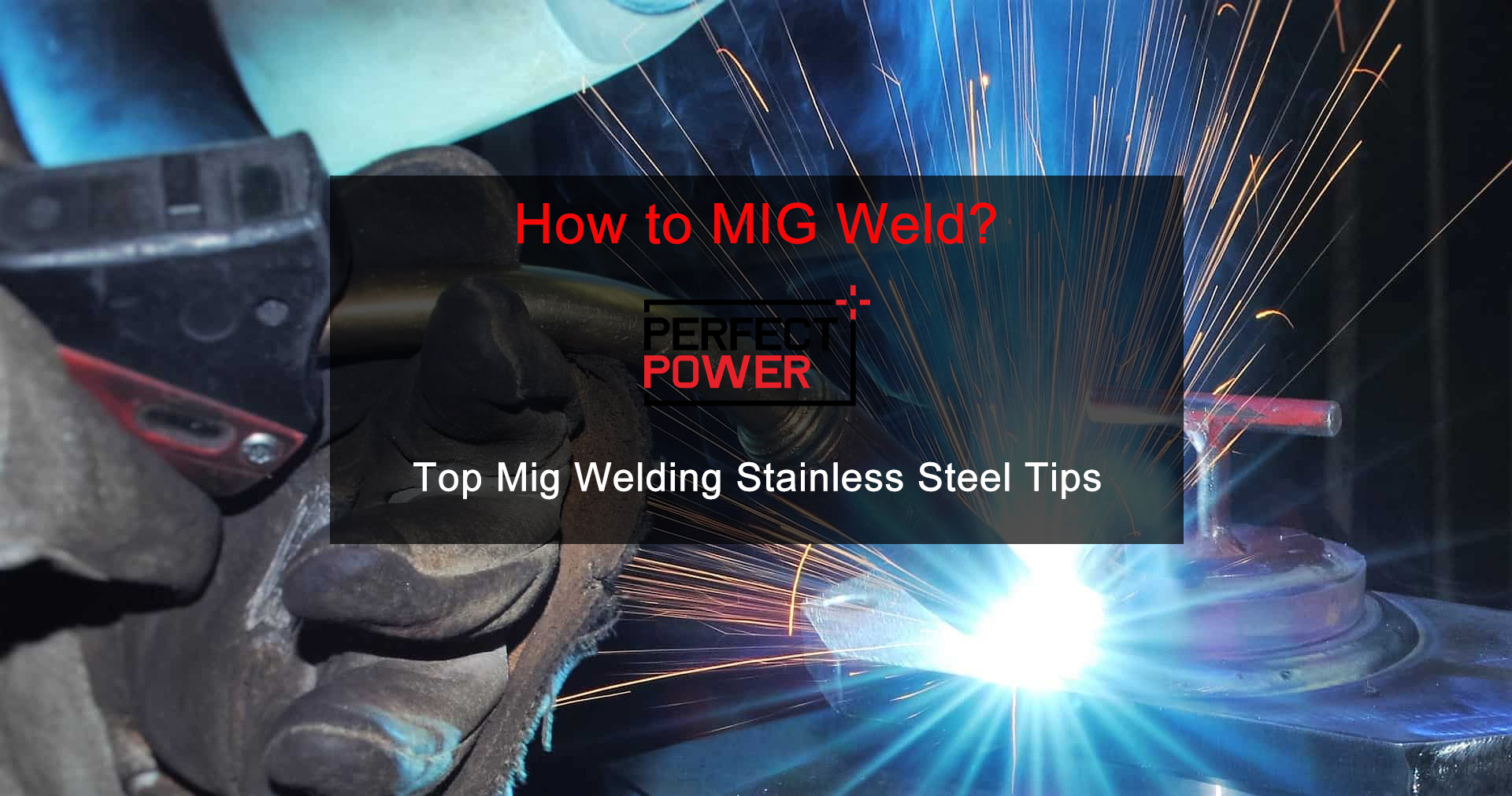How to MIG Welding Stainless Steel? MIG Welding Tips for Best Results
There are several ways involved to weld stainless steel, but mig is at the top due to multiple reasons. You may ask why it’s at the top or best? Because it creates spatter-free welds and produces the best results. You’ll obtain strong welds and higher productivity if it’s done with the right setting.
The query we mostly receive is how to mig weld stainless steel? In this article, all the stuff related to stainless steel mig welding is covered along with a few tips. Don’t forget that there’s a difference between stainless and mild steel. All this process looks complex, but in reality, it’s quite simple and easy.

How to MIG Welding Stainless Steel? Tips for Best Results
Steps for How to Mig Weld Stainless Steel
Some of these points should be considered before starting the weld while others should be followed during the weld. Follow the below-given checklist to obtain the best possible results.
1. Collect All Welding Gadgets
Before starting the welding, gather all essential equipment such as a gun, nozzles, gloves, helmet, shielding gas, brush, and a mig welder.
2. Choosing the Inert Gas
The most important factor is choosing the inert gas for your process. There are many gases and their mixtures that give good results with stainless steel. You may check the best gas for mig welding to choose the perfect one for your task. Improper gas can affect your weld quality.
3. Metal Cleaning
For a strong weld, clean the metal with the brush and remove all impurities such as dust, paint, and oil. Precisely clean the metal because small debris can create trouble while welding. Along with this, also clean the welding area and it should be dry to avoid any hazards.
4. Select MIG Wire
Mig wires come in a variety of sizes, which differ from metal to metal. For a thicker piece, you may use .035-inch to .045-inch. If you’re confused, then .030-inch wire is best for stainless steel welding.
5. Setup the unit
Set up your welder at the correct settings according to the metal thickness after cleaning the metal and selecting inert gas. Different settings are required for 12 gauge steel, while different parameters are required for 14 gauge steel. For novices, it is advised that they should practice on scrap stainless steel with various settings.
6. Travel Angle
Ensure that the arc strikes the desired weld region. To do so, angle the mig gun 30 degrees away from the joint end. When you hold a gun at 90 degrees, the travel angle between 5-15 degrees gives perfect results. The angle value may exceed when you weld lap and T-joints.
7. Welding Speed
You should weld at a reasonable speed, neither too fast nor too slow. A slower weld will create more penetration whereas a fast weld will look narrow. As stainless is sensitive, so don’t put high temperature on it.
As I mentioned earlier that it seems difficult but it’s very easy to weld steel by following these steps.
Best Gas for MIG Welding Stainless Steel
The choice of gas determines the weld result and in this case, you may attach argon, Co2, or a blend of any gas. According to our experience, the mixture of three gases like argon, carbon dioxide, and helium gives perfect results for stainless steel welding with mig due to fast speed, better penetration, and stable arc. The percentage should be 2.5% Co2, 7.5% argon, and 90% helium.
Further, the combination of argon and carbon dioxide 75:25 also produces satisfactory results. Moreover, the recommended gas flow rate is 14-16 liters per minute. That’s completely explained in gas pressure for mig welding.
Is MIG Welding Stainless Steel possible with Argon?
Yes, it’s possible with argon. It is, however, a bit complicated and an excellent alternative to consider if no other option is available. Arc stability is the major issue while welding with pure argon and you’re well aware that an unstable arc will produce ugly welds.
Our goal is to create a high-quality weld, but it’s not fully possible with argon, so it’s better to avoid it when other gases or mixtures are available.
MIG Welding Stainless Steel Without Gas?
It’s a different process and we use flux-cored wires to weld instead of the shielding gas. The method is simple and eliminates the usage of gas cylinders, so it’s preferred for home and lightweight tasks. In this process, the wire transforms itself into gas and shields the weld pool. The full process is explained in mig welding without gas. However, it’s quite challenging to produce decent welds with this technique.
Tips for Best Result

Here are some of the tips to consider for positive outcomes:
- Use austenitic steel for welding because they are far easy to use and can be welded into any shape due to the high amount of chromium and nickel in it.
- Filler metals with the same configuration as the base metal should be used.
- Do practice on scrap materials to have a strong command of stainless steel.
Common Questions
Yes, there’s a far difference between these two types. Mild steel is alloyed with carbon, whereas stainless steel is alloyed using chromium. When compared with each other, stainless steel is harder and has high corrosion resistance than mild steel.
With metal inert gas welding, a tri-mixture of carbon, helium, and carbon dioxide offers better results and productivity.
Absolutely not, because it involves a simple process and doesn’t include many complexities like TIG welding. One can completely learn it by using the correct settings within a month.
Last Words
Just like aluminum, stainless steel is the most used metal in the markets and industries. Knowing how to weld stainless steel will surely boost your skills level and knowledge. Follow all the steps and all other relevant information to produce the best outcomes. Mention your query below for any assistance.

